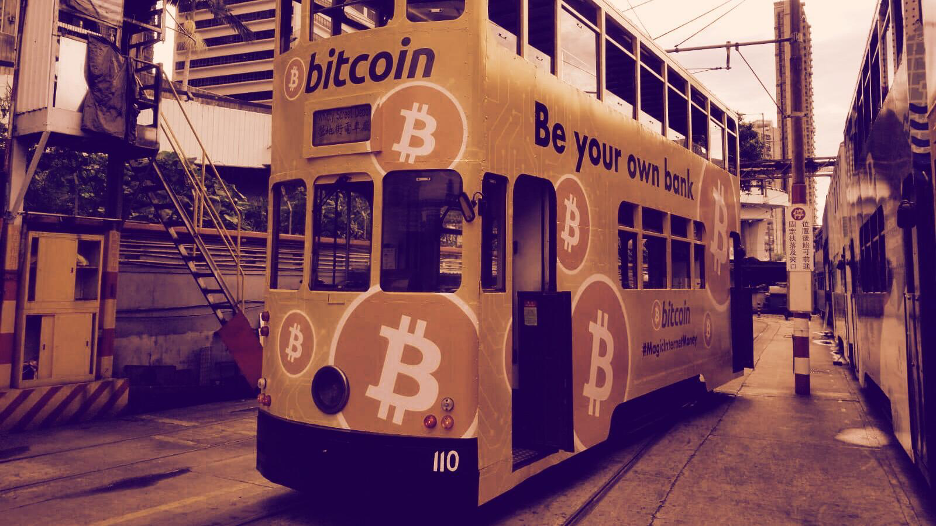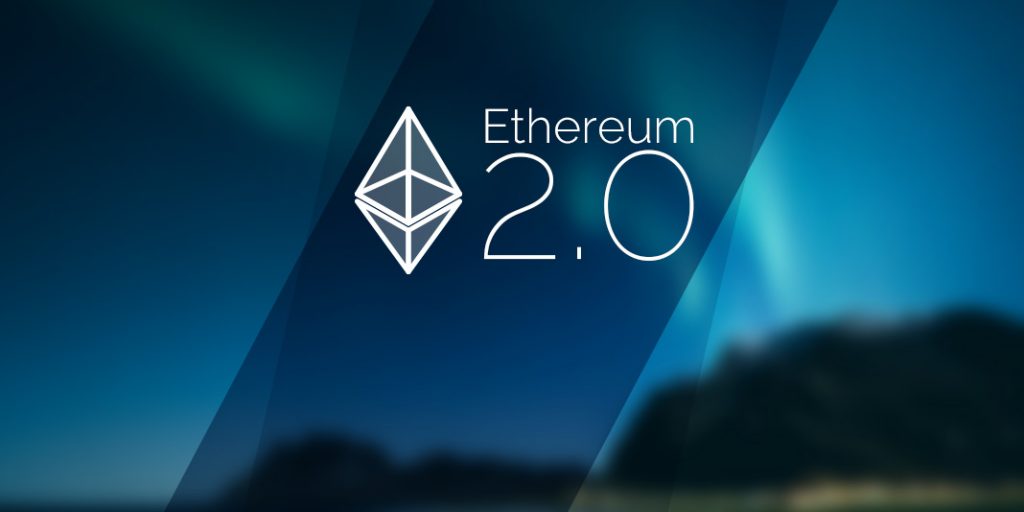
If you are a Bitcoin trader, you will likely have heard of the term “Bitcoin bull market”. Put simply, a bull market is the period during which the price of an asset turns sharply upward, following the rough trajectory of a bull’s horns. So, are we in a Bitcoin bull market? Well, we could potentially be gearing up for another big Bitcoin bull run yet, which many are referring to as a potential ‘supercycle’ that could take us to new highs in the crypto markets. Let’s, therefore, look at some of the different factors that could make Bitcoin investors feel bullish.
Big price moves and fluctuations are common in crypto, and it is not unusual to see altcoins doubling in value or dropping by 50% overnight. After all, crypto is not for the faint-hearted.
With so many exciting new announcements and developments in crypto, it could look like we are about to enter the next bull run. Consequently, a lot of attention is drawn to the wealth of services offered by emerging crypto projects and exchanges.
In this article, we want to take a look at some of the factors suggesting the possible emergence of a Bitcoin bull market, and explore some of the potential reasons the crypto community could be poised for big moves. However, remember that our article’s are always purely meant as educational material, and do not represent investment advice.
If you are looking to trade Bitcoin or other cryptocurrencies, you should absolutely make sure to attend the Ivan on Tech Academy course for Technical Analysis first, so you know the different trading terms and what to look for when you make your own analysis. Right now, you can enroll in Ivan on Tech Academy for 20% off with the promo code BLOG20.
Reasons We Could Be In A Bitcoin Bull Market
Marketing
You may have noticed various cryptocurrency advertisements popping up a lot recently. For example, the cryptocurrency project Hex ran an extensive ad campaign in London not long ago.

Moreover, Hong Kong was recently inundated with Bitcoin adverts, including three bright orange double-decker Bitcoin trams and 20 billboards telling citizens in the heart of the city, “Be your own bank”. The initiative was organized and financed by the 5,000 strong Bitcoin Association of Hong Kong and will run until October.
Cryptocurrency adverts have also been spotted advertising boards in top-tier football matches. Exposure to cryptocurrency is becoming widespread, hitting new audiences globally every day.
Collapsing Traditional Economy
Bitcoin was born during the midst of the 2008 global economic crisis. When the stock market plummeted and governments intervened to bail out the companies “too big to fail”, the deficit of financial education among the general public became apparent.
With the current pandemic-driven stimulus packages from the U.S exceeding $3 trillion in 3 months, economists are beginning to question the true value of the dollar. The stock market is reaching new all-time-highs whilst unemployment rates are through the roof and businesses are closing by the thousands.

The increasing dissonance between the stock market performance and reality within society has led many to believe that we are due a market correction. Some experts such as Robert Kiyosaki and Mike Maloney believe we are heading towards the worst crash since the Great Depression.
Since 2008 however, a lot of people have taken control of their own wealth by investing in cryptocurrencies. Those that were lucky enough to be involved in 2017 will know how exciting the lead up to a bull run can be.
Ethereum Congestion
At the beginning of September, the average network fees on Ethereum reached $15.21. This represents an increase of 660% from the previous month, when the average gas fees were only around $2.
Although gas fees and congestion on the Ethereum network are pricing some retail investors out of the market, the reality is that this congestion signals high demand for decentralized finance applications, and users are willing to pay a premium to participate in the latest Defi projects regardless.

Ethereum 2.0 aims to remedy this, in part, through the use of sharding. Sharding allows higher volume trades and more complex smart contract interactions on the Ethereum network to be separated from smaller transactions. Though it could still be years before we see the full Ethereum 2.0 update in action, the ball is already rolling, with the Medalla testnet already in full swing. Medalla will implement sharding as a scaling solution to prepare the Ethereum ecosystem for large-scale adoption.
This should make it easier for smaller transactions to be confirmed with reasonable transaction fees, allowing retail investors to use decentralized applications at a relatively affordable cost. Defi has been a catalyst for this coming bull run, and once retail investors can enter the market without ridiculous network fees, this is when the real bull market will likely ensue.
Uniswap
In August, the much-loved DEX Uniswap exceeded the daily trading volume of competing centralized exchange Coinbase. This shows more people than ever before are moving to the world of cryptocurrencies. Furthermore, this suggests that an increasing number of new users to the space are becoming more confident in using a decentralized exchange, without the need for third-party intermediaries, and maintaining complete ownership of their digital assets.

In the past, altcoin projects would need to pay a hefty premium to be listed on major centralized exchanges such as Binance or Coinbase, often with a lengthy vetting process. Now though, Binance seems desperate to list all the latest coins as quickly as possible. Within the past week or so, Binance has listed a string of Defi tokens which would otherwise often be traded on DEXs such as Uniswap.
Binance seems to be desperate to be up-to-date with as many listings as possible to keep up with the fast-moving Defi trends, with new projects popping up every day. The recent and very swift appearance of YFI, SUSHI, and even Uniswap’s brand new UNI token on the Binance platform suggest that CEXs are gearing up for the next Bitcoin bull market by expediting the listing of new coins. Even Coinbase has joined the party, recently listing a host of new coins, including YFI.
During the last week, Uniswap has been accumulating more network fees than the Bitcoin network, as trading volumes on the DEX soared over throughout August.
The new Uniswap UNI token reached the top 10 cryptocurrency list on the day of release, pushing Ethereum network fees to yet another all-time high.
Technical Analysis
In July, Bitcoin broke a three-year downtrend, breaking resistance at around $9,600. Bitcoin then peaked at just under $12,500 mid-August, indicating that the bulls had taken charge and confirming a strong trend change to the upside.
By the beginning of September however, the entire crypto market took a huge hit after the U.S stock market finally had a correction. Altcoins took the worst hit, but the entire crypto market dumped, taking a well-needed correction after an insane August.

Despite an increased correlation to the S&P 500, stocks, and gold, Bitcoin has since turned bullish, climbing over 12 percent since the lows in the first week of September. At the start of this month, Bitcoin dipped below $10k several times, causing the whole crypto market to look on in anticipation of a further drop. However, the drop didn’t come. Instead, there was tremendous buying pressure at the $10k level, showing the weak hands make way for the strong hands as the Bitcoin price hovers under $11k.
As previously mentioned, Ivan on Tech Academy has an extensive course for Technical Analysis. Moreover, over 20,000 students have already enrolled in Ivan on Tech Academy, and many have gone on to land jobs in the blockchain industry. Ivan on Tech Academy is one of the absolute top blockchain education platforms available online, and enrolling is incredibly easy. It’s one of the best ways to learn what technical analysis is all about. What are you waiting for?
On-Chain Analysis
Block explorers like Etherscan allow anyone to see exactly what is happening on the blockchain. Though these services have been around for a long time and are used extensively for a variety of different monitoring and analysis purposes, on-chain analysis is widely under-utilized by crypto traders and investors.
Many decentralized applications built on Ethereum, provide a nice user interface so users can get involved in Defi with just a few clicks. Under the hood, these dApps are running on smart contracts, which users can interact with directly, even if the main site is down for the particular application they are using, the application still exists on the blockchain.
Block explorers were once reserved for only the most sophisticated crypto users. Now though, block explorers are used widely for many purposes, as the average crypto user becomes more educated about blockchain. The more education in the space, theoretically, the more strong hands there will be in the market.
For those wanting to dig even deeper into blockchain and cryptocurrency analysis, on-chain analysis tools such as Glassnode and Chainalysis provide in-depth and comprehensive metrics and indicators that you won’t find on a regular chart. These services provide the most advanced insights into user behavior available, giving traders and investors the most up-to-date metrics and statistics about network activity.

With Glassnode, you can gain contextual, actionable insights to cryptocurrency markets, plus analysis and reports derived from on-chain data. On-chain data gives you an edge in cryptocurrency trading and investing. For example, on-chain data lets you see what percentage of a particular asset is in profit. If this number is high, it could suggest that a sell-off is imminent. You could also use on-chain data to see how much of a particular cryptocurrency is being removed from exchanges, which could signal that people are “hodling”.
Institutional Investment and Crypto Banks
When we think of crypto whales, we often tend to think of the blockchain pioneers and innovators, those who got into cryptocurrency very early on, and high net-worth individuals and stock market traders who have made the jump into crypto.
Over the past year or so, the number of blockchain and cryptocurrency-based financial services on offer has grown exponentially. Little over a decade ago, transacting with Bitcoin required extensive computer skills and was not exactly user-friendly.
Recently, however, crypto debit cards and payment services have exploded in popularity. Crypto.com made waves in the crypto space with the release of the Crypto.com MCO debit card. Binance also released a debit card this year, following the acquisition of payments company Swipe. Binance now offers a plethora of services and applications, including peer-to-peer trading, staking rewards, futures, and the new Binance Smart Chain, which brings DeFi to Cefi, in what is being referred to as… CeDeFi!

The San Francisco-based firm Kraken became the first crypto exchange to register as a bank in the US this month. The successful application means that Kraken will be able to interoperate with federal payment structures while offering a wider range of products to larger audiences across more jurisdictions.
This is a great move for Kraken and the entire crypto community. The integration of cryptocurrency and traditional finance is on the rise. Opinions about the mass adoption of cryptocurrency are sometimes divided, but moves like this seem extremely bullish for the entire crypto market.
Plutus is an exciting decentralized crypto-banking service. Users can manage their crypto and fiat on the Plutus platform, and have access to an in-app DEX and can earn cash back and rewards by using the Plutus card for purchases. Plutus is only available in the U.K, but the non-custodial crypto wallet comes alongside an attractive card, complete with sort code and account number, or a European IBAN.
Plutus is now cautiously edging towards a full banking licence, helping to bridge the world if traditional finance with DeFi.
There are already so many fiat on-ramps into DeFi that we didn’t have just a few months ago, making it easy for anyone to gain exposure to digital assets and decentralized finance.
Enterprise Adoption and Real-World Use Cases
Cryptocurrencies and blockchain technology are being used every day for a variety of different use cases. The ICO boom of 2017 was largely built on hype, as the excitement about the potential of Ethereum and other cryptocurrencies was completely speculative. At this time, there were many ICOs that did not have fully operational projects at their foundation.
As a result of this, the majority of these projects have faded into obscurity and are no longer around, except for a handful of high quality and resilient projects.
Now though, it’s a completely different story. In 2020 there are hundreds of fully functioning and operational blockchains and cryptocurrencies with legitimate use cases.

The worlds of business, finance, and technology are becoming increasingly interlinked. Naturally, blockchain is playing a key role in this convergence, with some of the biggest names in businesses implementing blockchain technology into their daily operations such as Google, Microsoft, Coca-Cola and IBM.
There is a lack of blockchain education among businesses that are creating a barrier for adoption, preventing many companies from keeping up with emerging technological innovations. Blockchain can be used for all kinds of business purposes, from supply chain management to healthcare.
Ivan on Tech Academy is educating enterprises about blockchain technology, bringing world-class learning to bright minds in many different sectors. Whether you are a private individual or a member of an enterprise, there are no downsides to enrolling in Ivan on Tech Academy.
Are We In A Bitcoin Bull Market: Conclusion
With so much going on in the crypto space, and a buzz developing around the use cases for blockchain technology, it’s difficult not to get excited. The technological innovation that is taking place right now is leading us closer to the mass adoption of cryptocurrency, which is extremely bullish for the future!

Some of the top trends emerging in cryptocurrency are building a huge hype around the coming bull market. But are we in a Bitcoin bull market right now? Zooming in on the Bitcoin chart, it looks like we are basically in 2016 all over again, with a parabolic move to the upside seeming imminent. Between now and the U.S election in November, could be a bumpy ride for both the stock market and cryptocurrency investors.
Will we see another stock market crash? Only time will tell. However, crypto is not slowing down, and Bitcoin has shown tremendous resilience in the face of economic downturn, and the altcoin market mooned throughout most of August, so a correction here is unsurprising.
The fact of the matter is that during times of economic uncertainty, and in fear of a stock market crash, people that are educated about money, tend to preserve their wealth by storing it in assets that are hedged against inflation. It has become preferential for many investors and businesses to keep holdings in Bitcoin, as opposed to fiat, and money is pouring into cryptocurrency from all over.
Though it may be difficult to know exactly when a bull market is beginning, it is apparently much easier to forecast the end of a bull market. According to Marius Kramer, if the price rallies to a 7.6x increase over the course of 37 days, the chances are that we’ve reached the end of a Bitcoin bull market.
Remember, there can only ever be 21 million Bitcoin ever made, so there’s not enough for everyone to have a whole one. The more people that realize this, and as the demand for cryptocurrency increases, FOMO could drive the price of Bitcoin to new highs. Nevertheless, in the end, only time can tell when the next Bitcoin bull market will either commence or end.





